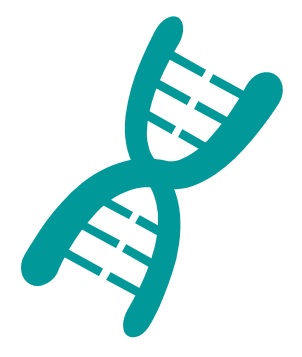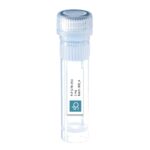PLP (178-191): NTWTTCQSIAFPSK mouse, rat
PLP proteolipid protein
Proteolipid protein (PLP UniProtKB – P60202) is the most abundant protein of central nervous system (CNS) myelin. The PLP assumes a function of stability by maintaining the lamellar structure. Antibodies against Proteolipid protein has shown a role in the pathogenesis of MS (Multiple Sclerosis).
PLP 178-191 induces EAE (experimental autoimmune encephalomyelitis)
The PLP 178-191 peptide (proteolipid protein) is a fragment of the proteolipid protein. PLP 178-191 is used to induce experimental autoimmune disease encephalomyelitis to study the demyelination process in the model of MS (multiple sclerosis). PLP (178-191) can elicit a strong immune response.
Technical specification
 |
Sequence : NTWTTCQSIAFPSK – Purity : > 95% |
 |
MW : 1583.77 g / mol (C70H106N18O22S) |
 |
For research use |
 |
Counter-Ion : TFA Salts (see option TFA removal) |
 |
Delivery format : Freeze dried in polypropylene 2mL microtubes |
 |
Other names : Proteolipid protein (178-191) |
 |
Peptide Solubility Guideline |
 |
Bulk peptide quantities available |
Prices
| Product catalog | Size | Price € HT | Price $ USD |
| SB143-1MG | 1 mg | 110 | 138 |
| SB143-5MG | 5 mg | 385 | 481 |
References
J Immunol. 1992 Aug 1;149(3):783-8
Identification and characterization of a second encephalitogenic determinant of myelin proteolipid protein (residues 178-191) for SJL mice.
We previously described a synthetic peptide of myelin proteolipid protein (PLP), peptide 139-151, which induces experimental allergic encephalomyelitis in SJL/J (H-2s) mice. We have now identified an additional determinant, PLP residues 178-191, that is also a potent encephalitogen in this strain. When PLP peptide 178-191 was compared with peptide 139-151 on an equimolar basis, the day of onset of disease induced by PLP 178-191 was earlier, but the incidence, severity, and histologic features were indistinguishable. Lymph node cells from animals immunized with the whole PLP molecule responded to both PLP 178-191 and 139-151, suggesting immunologic codominance of the two epitopes. PLP 178-191 elicited stronger proliferative responses and this may relate to the earlier onset of disease induced with this peptide. Two CD4+, peptide-specific, I-A(s)-restricted T cell lines, selected by stimulation of lymph node cells with either PLP 178-191 or 139-151, were each encephalitogenic in naive syngeneic mice. The presence of multiple encephalitogenic codominant PLP epitopes within a single mouse strain emphasizes the complexity of the immune response to PLP and its potential as a target Ag in autoimmune demyelinating diseases.
APMIS. 2011 Jun;119(6):336-46. doi: 10.1111/j.1600-0463.2011.02744.x. Epub 2011 Apr 12.
Differential patterns of spinal cord pathology induced by MP4, MOG peptide 35–55, and PLP peptide 178–191 in C57BL/6 mice
In this study we demonstrate that experimental autoimmune encephalomyelitis (EAE) induced by the MBP–PLP fusion protein MP4, MOG peptide 35–55, or PLP peptide 178–191 in C57BL/6 mice, respectively, displays distinct features of CNS pathology. Major differences between the three models resided in (i) the region-/tract-specificity and disseminated nature of spinal cord degeneration, (ii) the extent and kinetics of demyelination, and (iii) the involvement of motoneurons in the disease. In contrast, axonal damage was present in all models and to a similar extent, proposing this feature as a possible morphological correlate for the comparable chronic clinical course of the disease induced by the three antigens. The data suggest that the antigen targeted in autoimmune encephalomyelitis is crucial to the induction of differential histopathological disease manifestations. The use of MP4-, MOG:35–55-, and PLP:178–191-induced EAE on the C57BL/6 background can be a valuable tool when it comes to reproducing and studying the structural–morphological diversity of multiple sclerosis.

